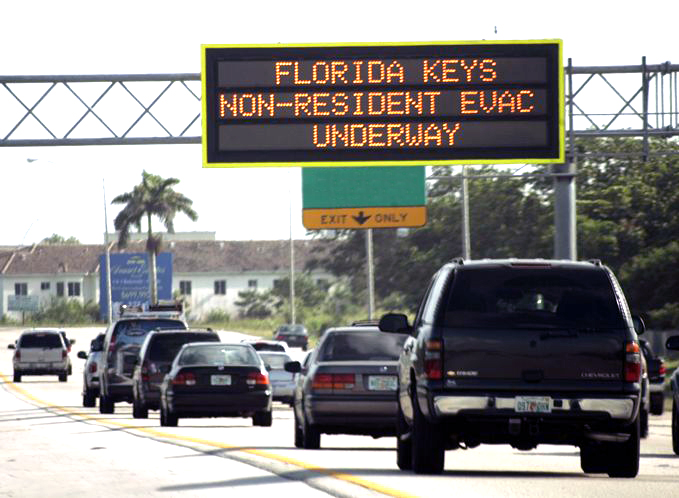
Workshops held throughout the Florida Keys on June 13 and 14 brought staff from the Florida Department of Economic Opportunity (DEO) face to face with government officials, business leaders and residents throughout the island chain, as the department prepares to update its hurricane evacuation modeling and corresponding Memorandum of Understanding (MOU) dictating building allocations in the Keys.
The impacts of the updated modeling, and the corresponding changes to the MOU with Monroe County, Key West, Islamorada and Marathon cannot be overstated. The prior model, used to inform a regimented distribution of 3,550 residential building permits throughout the Keys’ Areas of Critical State Concern from 2013 to 2023, has not been updated since its 2012 iteration based on 2010 census data.
In that span, Monroe County’s population has grown from 73,090 in 2010 to 82,874 in 2020 – a 13.4% jump. Meanwhile, several municipalities will reach the end of their allocation pools within the next three years, raising concerns of significant takings cases if property owners are left with buildable land, but no avenue to obtain a building right. Pulling from 2020 census data, the new model could potentially provide a fresh pool of allocations up and down the Keys.
It’s a possibility that has some excited, and others speaking out against the dangers of over-development in islands with a fragile ecosystem and aging infrastructure.
Speaking to a full house at the Marathon Government Center on June 13, DEO Secretary Meredith Ivey, bureau chief Kate Doyle and regional planning administrator Barbara Powell outlined next steps for the new model, scheduled to run later this year or early next year.
As intended by the Florida Legislature, Doyle said, the new model intends to continue striking a balance between “orderly and balanced growth” throughout the islands, provision of affordable housing opportunities, protection of property owners’ constitutional rights, and protection of environmentally sensitive lands and nearshore waters in the Keys.
It also will continue to provide for a safe evacuation of all permanent Keys residents in no more than 24 hours. As detailed by Powell, this includes an average response time of roughly 12 hours from the time an evacuation order is given to the time a resident will be on the road, as well as expected resident “participation rates” for mandatory evacuations in different categories of storms – about 80% for a Category 4 storm, and 90% for Category 5.
Since the last model, Powell said there are significant updates to the numbers and types of vehicles used by each type of residence, as well as changes in road capacities and flow rates due to recent improvements and technologies. She said the agency will take a close look at how transient units, including a spike in vacation rental homes, will affect the new evacuation standards.
The new model, while pulling from updated multifaceted data, will be run with the same system used in 2012. It’s anticipated to add residents in certain military housing and mobile homes, previously included in the 48-hour “Phase 1” evacuation group along with tourists, into the 24-hour contingent. Though the department will examine regional hurricane evacuation data that includes Miami-Dade and Broward County, the model used to inform building allocations within the Keys is based on Monroe County only.
Citizen comments at the Marathon session focused on concerns with continued development in a fragile island chain that many consider to already be at capacity. This idea has already served as the basis for a highly-publicized lawsuit that saw hundreds of affordable housing units, bestowed in 2018 at the order of then-Gov. Rick Scott, temporarily revoked in 2022.
Some expressed concern with the Keys’ aging infrastructure, as evidenced by numerous serious breaks in the Florida Keys Aqueduct Authority’s water pipeline earlier this year, and described degradation of the Keys’ delicate ecosystem in recent years. Several asked the department to ensure that vacation rental homes continue to be included in early evacuation requirements.
Coldwell Banker Schmitt president and broker Brian Schmitt said he hopes the Keys do receive more allocations, but that additional units should focus on deed-restricted affordable housing for the Keys’ workforce and allocations for families competing against the vacation rental business for the right to build a primary residence.
Among other criticisms, former Monroe County school board member Capt. Ed Davidson questioned whether using a model accounting only for a Keys evacuation was realistic or safe when determining building allocations.
“The presumption is that while we’re fleeing for our lives from the Florida Keys, nobody in Homestead, Miami, Fort Lauderdale or West Palm Beach is aware there’s a killer hurricane on the way, and they haven’t left the house,” he said. “That is a preposterous presumption, and someday will be a deadly presumption.”
Others echoed Davidson’s concern, recounting their own difficulties evacuating throughout the state during Hurricane Irma.
DEO is currently accepting public comment on the upcoming model until June 30 via email to FLKeysEvac@DEO.MyFlorida.com or by mail to: Florida Department of Economic Opportunity, Division of Community Development, Attention: BCPG, The Caldwell Building, 107 East Madison Street MSC-400, Tallahassee, FL 32399.
Resident concerns come just as the Keys begin to take note of a few early storms during hurricane season. Though neither is forecast yet as significant threats to the Keys, the National Hurricane Center is currently tracking Tropical Storm Bret and Invest 93 as they move west through the Atlantic Ocean. Updated information is at nhc.noaa.gov.




















